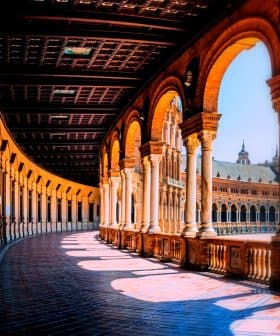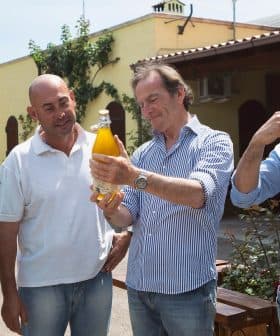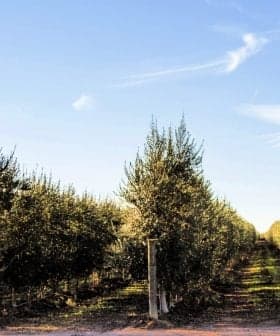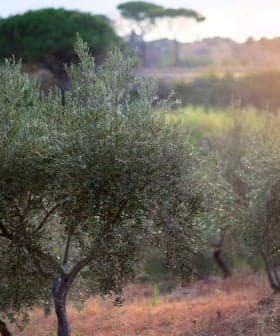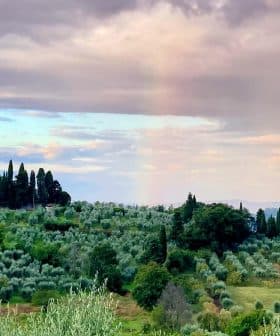Award-Winning Producers in Central Italy Prepare for Harvest
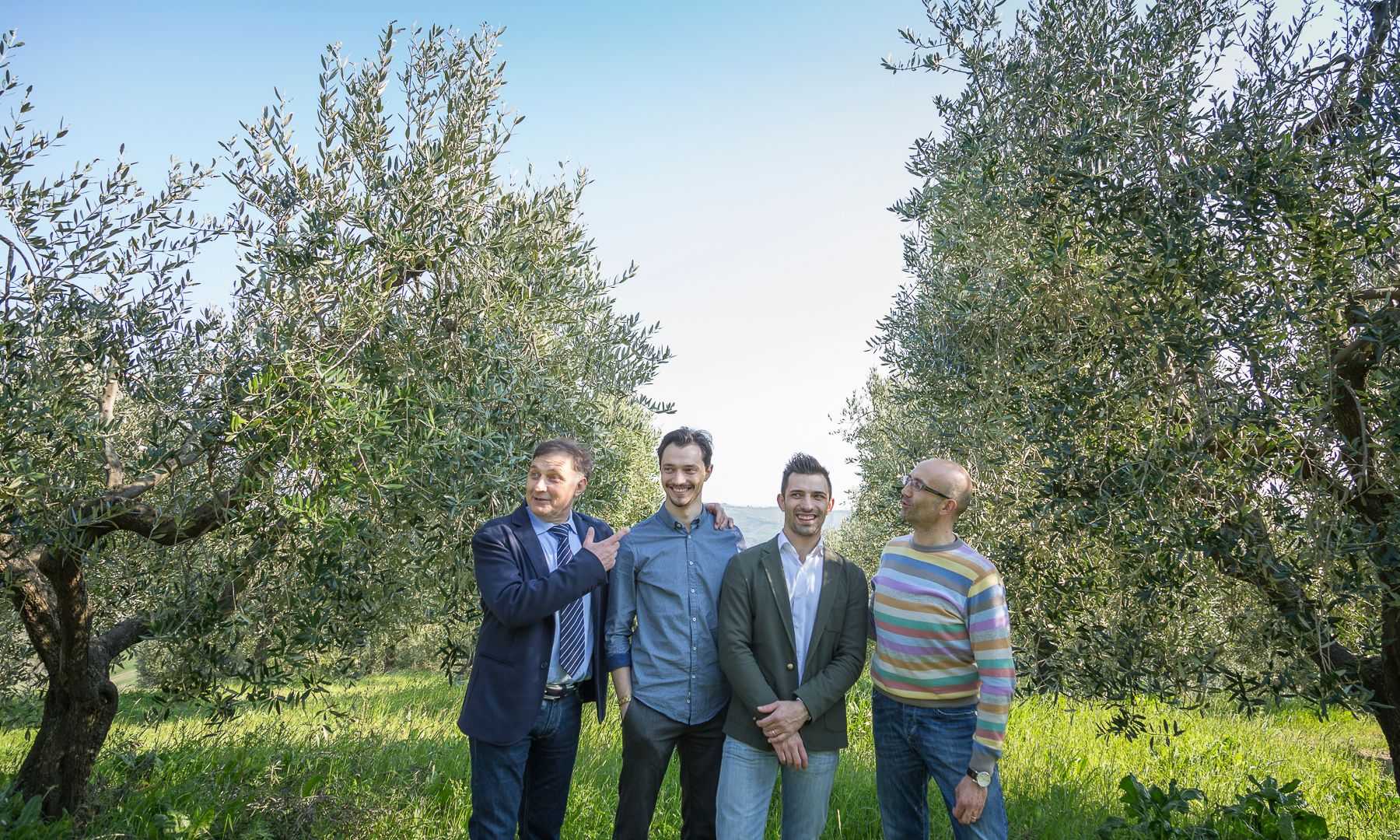
Producers from central Italy, particularly in Lazio and Umbria, played a significant role in Italy’s success at the 2021 NYIOOC World Olive Oil Competition, with ideal weather conditions allowing for high-quality olive oil production despite the challenges posed by the Covid-19 pandemic. Producers like Silvio Marsan in Lazio and Marco Viola in Umbria have implemented sustainable practices, such as combining animal rearing with olive farming and using the latest technology, to produce award-winning extra virgin olive oils.
Part of our continuing special coverage of the 2021 NYIOOC World Olive Oil Competition.
Producers from central Italy made a significant contribution to the success of their country at the 2021 NYIOOC World Olive Oil Competition.
Ideal weather conditions allowed many of them to obtain large volumes of high-quality extra virgin olive oil, successfully overcoming the challenges posed by the Covid-19 pandemic.
Inspired by the awards that we have earned, once again this year, we will do our best to achieve the highest quality.
This was the case of Lazio, whose fertile territory, characterized by a large stretch of coast and hills surrounding volcanic lakes, is home to several award-winning farmers.
In the province of Viterbo, Silvio Marsan and his family produce the organic extra virgin olive oil, San Bartolomeo.
See Also:Northern Italian Producers Share Secrets of Success at World Olive Oil Competition“Originally, the olive trees were intended to provide shade to our free-range chickens and turkeys,” said Marsan, who is well known for breeding free-range poultry.
“Since then, the association between animals and plants has become so fruitful that we decided to add some plots, and we are now planning to devote over 200 hectares to olive farming,” he added.
Currently, about 60 hectares of groves are in full production. Canino, Frantoio and Leccino are used in a blend that earned San Bartolomeo a Gold Award at the world competition.
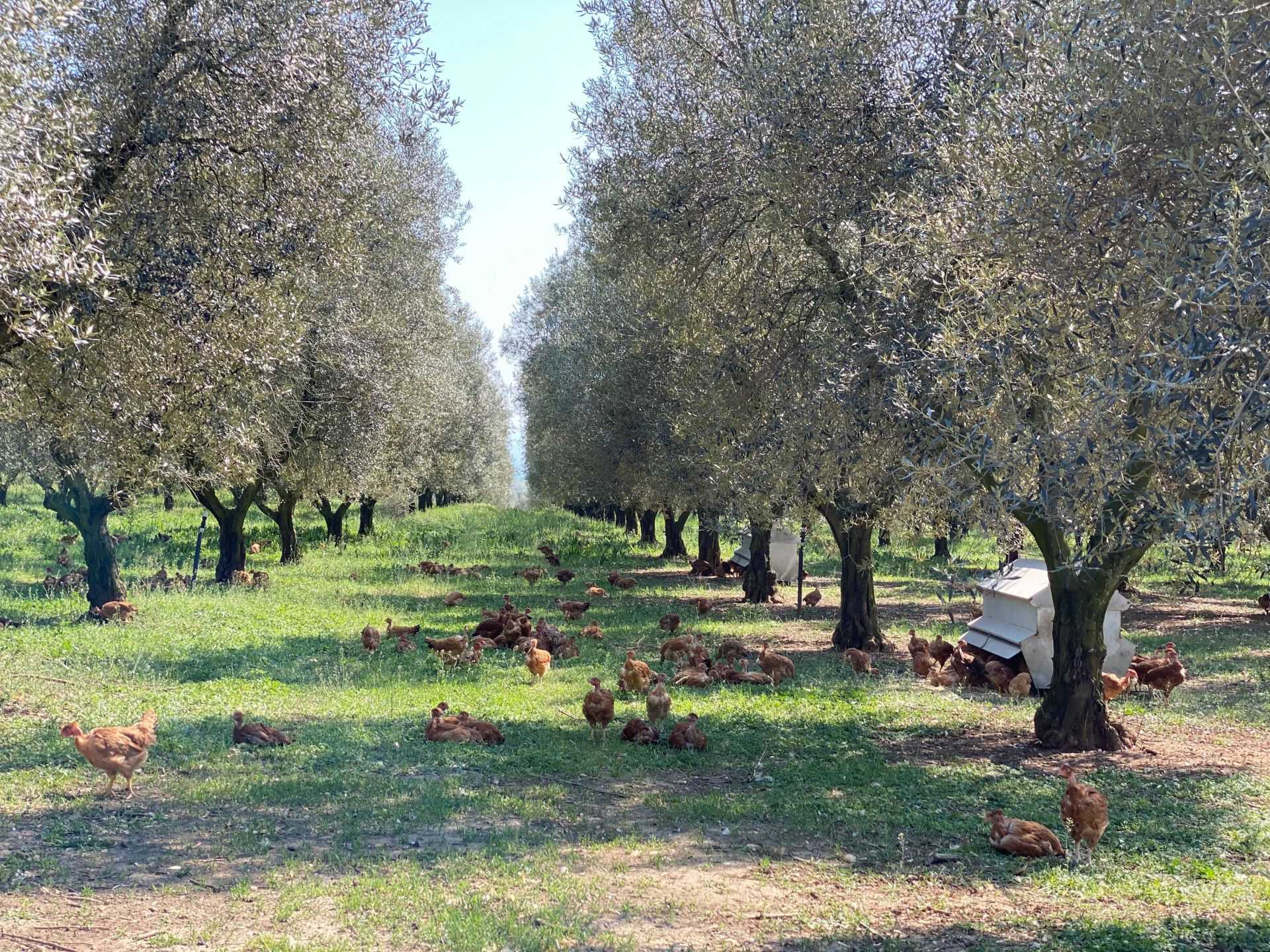
Photo: San Bartolomeo
“Our latest-generation oil mill allows us to achieve high levels of quality,” Marsan said. “Yet, I believe that a strong point is the fact that the facility is close to the orchard. We are able to crush the fruits immediately, which are not altered by storage.”
The family company was founded in the 1990s nearby Lake Bolsena, in a hilly area of high Tuscia. For the past 30 years, the Marsan family has bred Marans chicken, leaving them free to roam in the orchard.
As their eggs garnered the attention of chefs and consumers, the family increased its olive oil production, harnessing the benefits of the agroforestry system that combines animal rearing and olive farming.
“We feed them grass, sprouts, insects, small worms, sun and clean air,” Marsan said, stressing the importance of sustainable and healthy livestock production.
“The floor where the poultry rest at night is made up of straw and manure,” he added. “From this, we obtain a compost called ‘pollina’ which is collected along with agricultural by-products such as pomace, and is used to produce biogas through anaerobic digestion.”
Olive pits removed during the milling process are used to heat the company farmhouses and combusted to obtain charcoal that is added to the chickens’ feed to regulate their intestinal functions.
“All this allows us to produce electricity and heat for our company in a sustainable way, reusing all the waste products,” Marsan said. “From this process, we also obtain digestate that we use as fertilizer for crops.”
Several NYIOOC winners also came from neighboring Umbria. In Foligno, in the province of Perugia, Marco Viola earned a Gold Award with his Colleruita Umbria PDO.
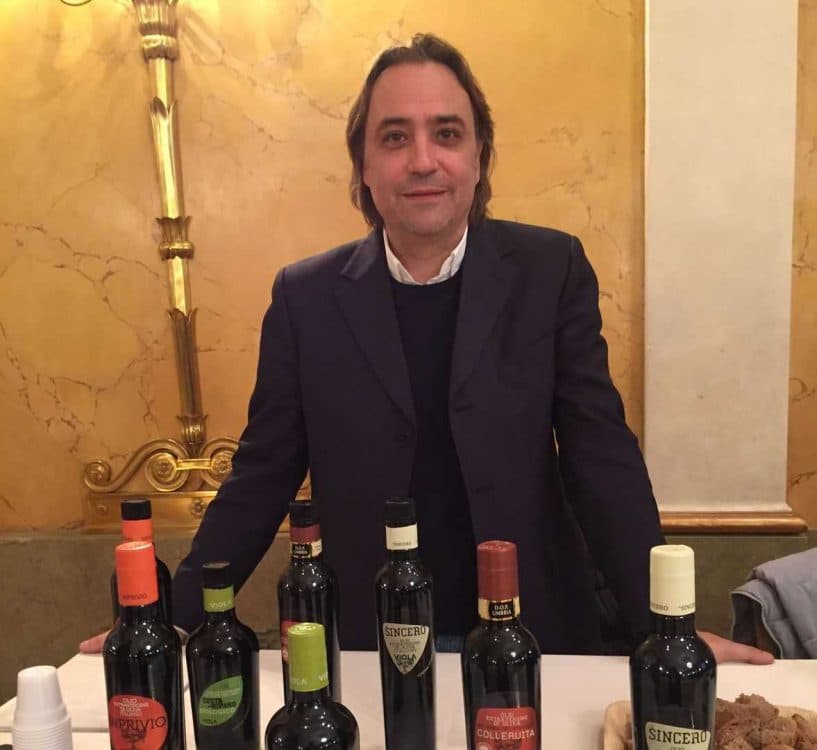
Marco Viola
The blend comes from the fruits of almost 23,000 trees scattered over 60 hectares of hilly land nestled in the olive tree belt between Assisi and Spoleto, the first Globally Important Agricultural Heritage Systems site in Italy and now a candidate to become a UNESCO World Heritage site.
“We have been a family of producers for over 150 years,” Viola told Olive Oil Times. “In 2006, I took the reins of my grandfather’s company, which has included an olive press since 1917.”
This legacy was picked up by Viola, who today uses the latest technology to obtain high-quality extra virgin olive oils.
“Our mill, exclusively devoted to our fruits, features heat exchangers, a state-of-the-art computerized management of all the operations and other arrangements allows us to shorten the time of the production process,” he said.
Moraiolo, Frantoio and Leccino trees are located on calcareous, stony slopes. They enjoy excellent sun exposure and breezes that ensure the proper humidity, making this the ideal environment for their healthy development. Legumes and cereals, partly used for flour production, are grown alongside the olive groves.
See Also:The Best Olive Oils From Italy“We also rely on some partner suppliers, who our agronomists advise,” Viola said, specifying that they share the same entrepreneurial vision and code of ethics.
“We are aware of our social responsibility, pursuing the safety of employees, the guarantee of product quality and respect for the environment,” he added.
Starting from the organic management of the olive grove, Viola’s work is based on sustainability.
“We do not use any pesticide,” he said. “In the field, we rely on technology, namely weather stations equipped with sensors for monitoring climate and phytopathological variables.”
This allows precise and timely management of the olive grove and helps prevent pest infestations, such as the olive fruit fly.
“The last harvest was one of the best,” Viola said. “It was excellent from a qualitative point of view, and, except for a very low yield, we could count on a large amount of fruits.”
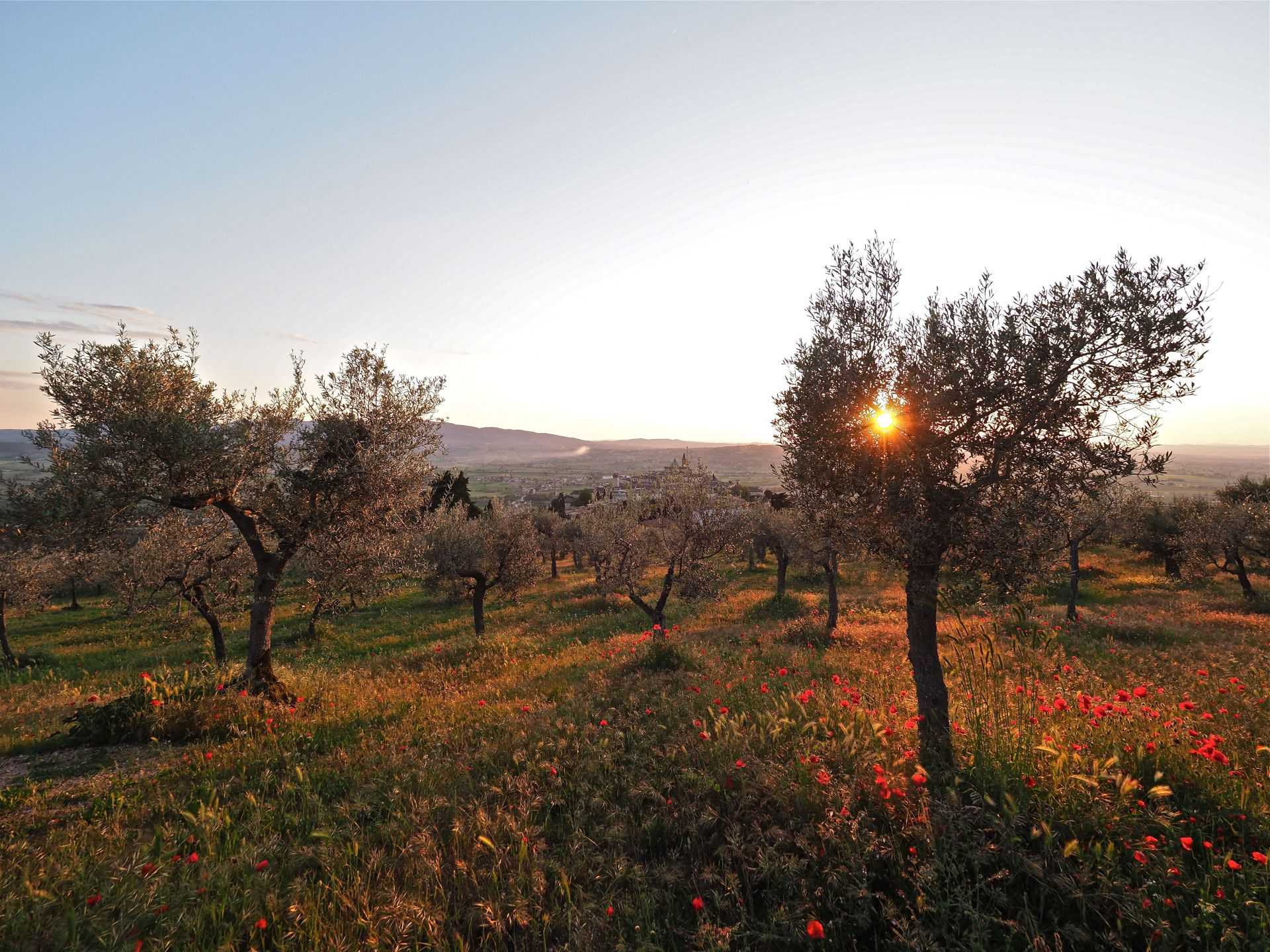
Viola
“We are getting ready for a new season, where we still focus on pursuing the highest level of quality with the utmost respect for our territory,” he added.
In the Marche region, just northeast of Umbria, Elia, Marco, Gaetano and Maurizio Agostini are the producers behind the award-winning Sublimis and Hurticinum.
Their family company, founded in 1945 right after World War II, has the latest generation mill at its heart. They crush the fruits of several varieties, including Ascolana Tenera, Raggia, Frantoio, Leccino and Carboncella.
“To diversify and ensure constant production, we have decided to spread out the locations of our olive groves,” Elia Agostini told Olive Oil Times. “Indeed, the different territories respond in different manners to weather, especially given the increasing occurrence of extreme events as a consequence of climate change.”
Hence the decision to work on two fronts: an olive grove of 2,500 trees on the hills of Ortezzano, halfway between the sea and the mountain, and an olive grove of 12,000 trees on the coast, in Ancona, managed in collaboration with Frantoio del Carmine, for a total of 34 hectares.

Frantoio Agostini
“We believe that synergies between companies can play an important role in the high-quality sector,” Agostini said. “They make it possible to diversify the production while maintaining the territorial authenticity.”
To this end, the Agostini mill is also supplied by a group of trustworthy local growers who share their quality views.
“They are supported by our agronomists,” he said. “We are very grateful to these farmers, for they have committed themselves, for 15 years now, to keep the highest product standards to provide us with their best fruits.”
At the right time, the olives are picked and crushed within six hours of harvesting in a two-phase mill.
“What really drives us in our production choices is sustainability,” Agostini said. “Therefore, we have chosen to reduce water use applying this extraction technology. Also, we reuse all the waste products – from leaves used as a fertilizer to pits that become pellets, which we sell and use for heating.”
The entire production cycle is supplied with clean energy, evidenced by a photovoltaic plant located on the roof of the factory.
“We are so close to starting the new season,” Agostini said. “Now, we are keeping an eye on the plants of Ascolana, an early variety that with hot temperature can ripen rapidly. We have an exceptional harvest behind us.”
“At first, the great heat gave us concern for the balance of bitterness and pungency in our extra virgin olive oils, but in the end, we managed to obtain good products, which is our goal every year,” he added. “Inspired by the awards that we have earned, once again this year, we will do our best to achieve the highest quality.”



